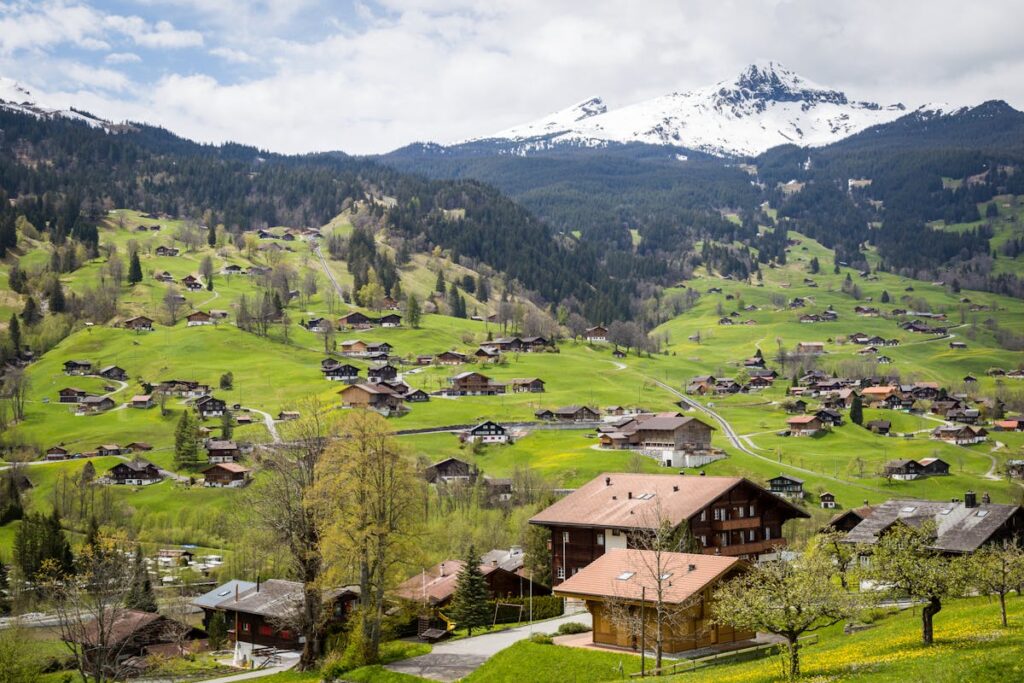Verbier, located at the center of the Bagnes Valley in Switzerland, is one of the most prestigious alpine destinations in Europe. Known around the world for its skiing, magnificent lifestyle, and breathtaking landscape, Verbier holds a deep historical significance. In the year 1936, this mountain was a significant turning point for the village, as it started its journey from a cool alpine settlement at a world-class ski resort. Understanding Verbier 1936 helps travelers to appreciate its roots, culture, and changes in today’s glamorous destination.
The Origins of Verbier
Before Verbier became a heaven for skiers and adventurers, it was a humble alpine settlement in the Bags Valley. The valley itself is part of the canton of the Valais, which is a rich area in history, known for agriculture, livestock, and traditional Swiss culture. The villagers mainly trusted farming and the upbringing of cattle, in which seasonal migration used to shape local life.
However, the rugged landscape had unused capacity. With the rise of alpine exploration in the early 20th century, Verbier’s slopes attracted attention from climbers and courageous travelers, seeking untouched snow fields and funeral scenes.
Verbier in 1936
The year 1936 was an important chapter in Verbier’s story. This was when Shaile was first built to welcome tourists. At this time, Switzerland was already recognized as a skiing destination, and the natural slopes of Verbier offered an ideal setting. The establishment of early housing, directed tourism, and ski-friendly infrastructure began to shape the village into a center for winter sports.
Nearly all European countries, especially tourists from France and Italy, began visiting Verbier, which was designed by its cool alpine attraction and adventure opportunities. What started in 1936 as a modest development will eventually lay the foundation for the global recognition of Verbier.
Geographical assessment
The Verbier Bags are located within the valley, surrounded by the amazing Pennine Alps. Snow-covered peaks, rolling meadows, and pine forests mesmerize this place throughout the year. The valley is surrounded by impressive mountains, which include Mite Grand Combin and Mont Fort, providing a dramatic background for both skiing and hiking.
This unique geography not only made Verbier ideal for skiing, but also gave visitors to year -long attractions such as mountain biking, climbing, and paragliding.
Cultural Importance of Bagnes
Bagnes is a strong cultural identity of the broad municipality in which Verbier is located. Its traditions are deeply ingrained in farming, making cheese, and seasonal festivals. The Bagnes Museum today presents these cultural treasures, tools from previous generations, to show equipment, clothes, and stories.
Festivals such as The Bagnes Alpine Festival highlight music, folk dances, and traditional Swiss cuisine. Visitors who discovered Verbier may still feel a mixture of the old world’s legacy and modern hospitality, making the bagane unique among other alpine destinations.
Rise of ski tourism
By the 1930s, Swiss skiing was becoming a playground for enthusiasts, and Verbier quickly joined the scene. Early passengers were fascinated by untouched snow slopes and huge alpine playgrounds. Unlike established resorts, Verbier offered a sense of raw adventure, attracting the pioneers who did not take into consideration the limited infrastructure.
In 1936, skiing was still a relatively new concept for a holiday rather than a utility, and the vertical areas of Verbier became a favorite for thrilling. Gradually, the word spread, and Verbier began to welcome more international guests.
Verbier’s Architecture in 1936
In 1936, the architectural style of Verbier reflected a mixture of rustic attraction and practical design. Traditional Swiss chalets, made of wood and stone, dominated the landscape. In these comfortable structures, heavy snow and wooden balconies were shown with roofs decorated with carvings.
As tourism grew, these villages developed into stylish lodges and hotels, but Verbier never lost its traditional Alpine character. Even today, many modern luxury villas preserve chalet-inspired design.
World War II and Verbier
In the late 1930s, the outbreak of World War II slowed down the growth of Verbier. Tourism in Europe came to almost a stop, and local communities had to rely on farming and small-scale trade. Despite the challenges, Verbier tolerated, and its reputation as a ski heaven boiled below the surface, waiting for the occasions after the war.
Post-War Growth
After the war ended, Verbier entered a period of rapid change. The 1950s saw the introduction of ski lifts and cable cars, making the slope more accessible. The hotel expanded, restaurants were opened, and once Chhota Alpine became a magnet for winter passengers.
Offering modern comfort, Verbier had made careful plans to ensure this while maintaining its traditional attractions. By the end of the 20th century, Verbier was firmly established as one of Switzerland’s leading ski resorts.
Modern action
Today, Verbier is synonymous with luxury and adventure. From world-class ski slopes to good dining restaurants, boutique shops, and spas, it attracts travelers seeking celebrities, athletes, and uniqueness. The vibrant nightlife and cultural programs of the city make it more than only one skiing destination – this is a lifestyle experience.
Natural attraction
The scenario of Verbier provides endless opportunities for nature lovers. Mont Fort Peak offers breathtaking, captivating views, while hiking trails reveal alpine meadows filled with wildflowers during summer. Adventure Sikars can try mountain biking, rock climbing, and paragliding, while cool passengers can enjoy natural passage and nature photography.
Cultural Attractions
Verbier and Bagnes are rich in culture. The Bagnes Museum provides insight into the history of the valley, while the annual festivals celebrate local traditions. The region also embraces music, in which Verbier is hosted with internationally recognized classical music festivals that attract world-famous artists.
Verbier’s role in Swiss skiing
Verbier is not just a tourist destination – it is the cornerstone of Swiss skiing. It hosts international competitions and programs, giving it a reputation as a top-level ski destination. Ski schools and professional trainers make it an excellent place for beginners and experts.
Stability in action
Modern Verbier emphasizes eco-tourism. Efforts include green energy projects, recycling programs, and initiatives to preserve the natural landscape. Hotels and chalets use rapid, durable designs, which ensure a vibrant balance of tourism with environmental care.
Travel Tips for Visitors
- The best time to travel: Winter for skiing (December -March) and hiking for summer (June -September).
- Arriving there: Marting through the Verbier Train and then a cable car is accessible through a bus or resort.
- Where to be: From luxury chalets to budget-friendly hostels, Verbier has options for every passenger.
- Dining: Do not miss Swiss Fondue, Regal, and local wine from the Valais area.
Conclusion
Verbier, 1936, Bagnes, Switzerland, is not only about history – it is about heritage. In the 1930s, from a humble alpine village to a world-class ski destination today, Verbier represents the correct mixture of Verbier tradition and modernity. Its attraction lies in its ability to preserve cultural heritage by embracing global tourism. Whether you are drawn by skiing, culture, or breathtaking views, Verbier remains a timeless jewel of the Swiss Alps.





